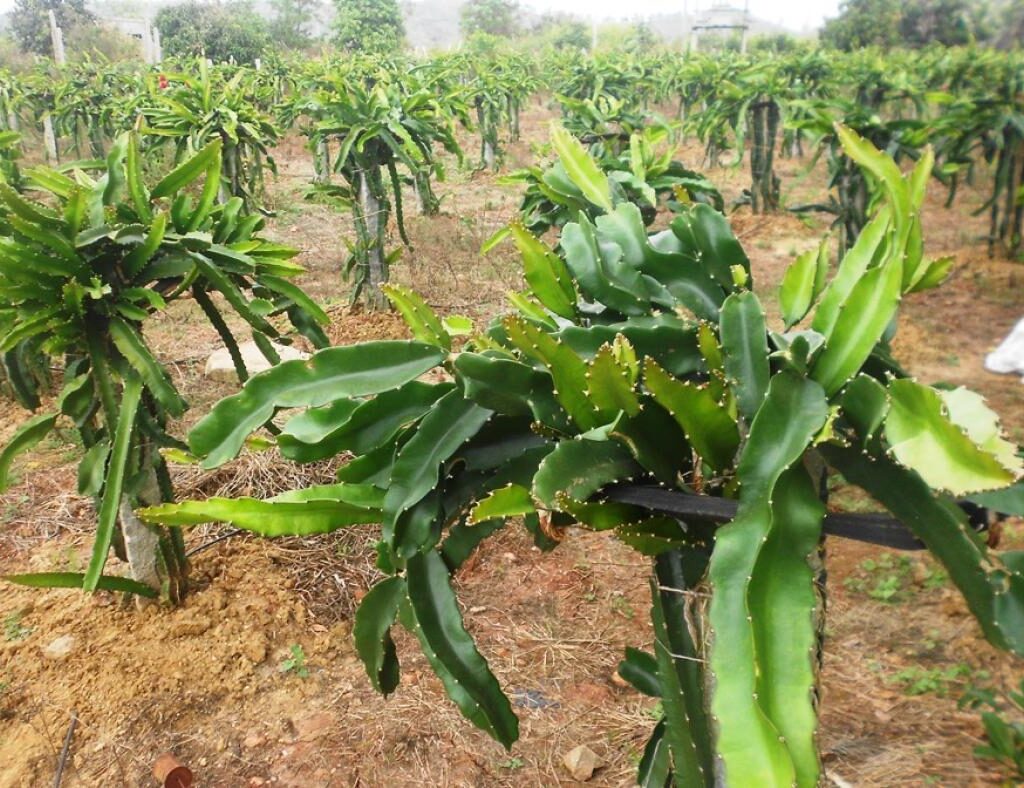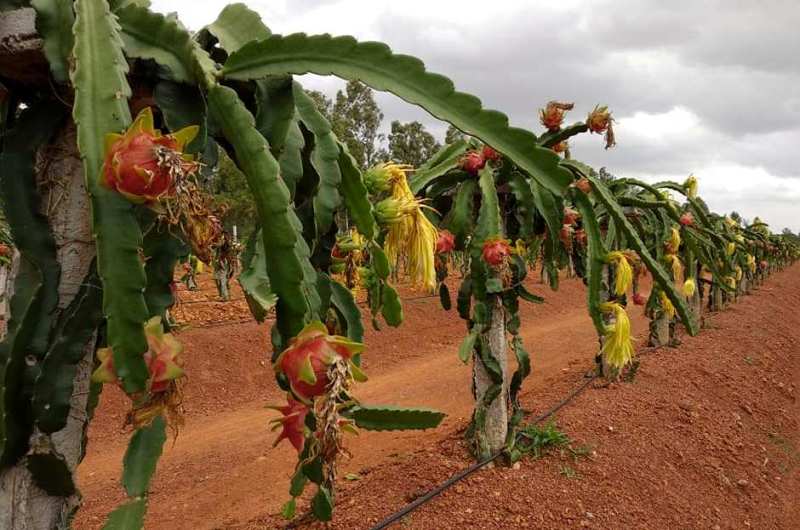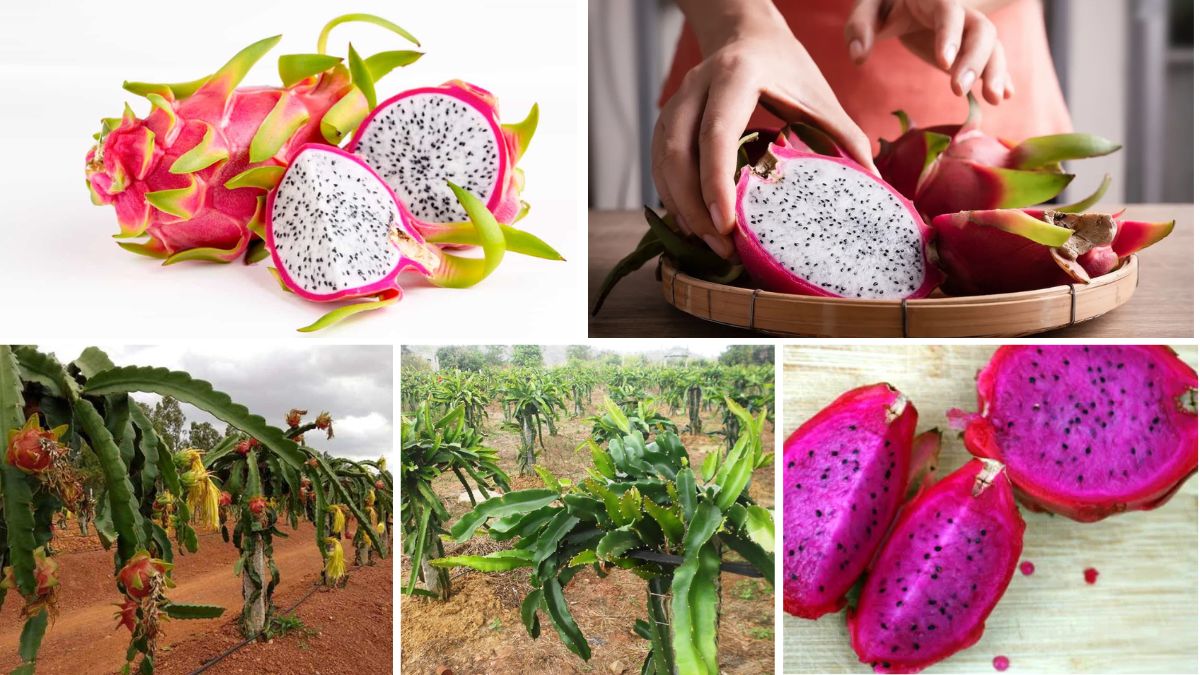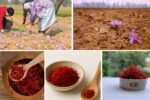Dragon fruit (Hylocereus spp.), once an exotic curiosity, has become a symbol of agricultural innovation and entrepreneurial spirit. Across the globe, farmers have transformed barren lands and unconventional backgrounds into thriving dragon fruit orchards. This article delves into some of the most inspiring and fastest-growing success stories in dragon fruit farming, highlighting the journeys of individuals who have turned passion into profit.
1. Dr. Srinivasa Rao Madhavaram – Telangana, India

Dr. Srinivasa Rao Madhavaram, a medical doctor by profession, ventured into dragon fruit farming in 2016. Intrigued by the fruit’s unique appearance and health benefits, he established a 30-acre organic farm in Sangareddy, Telangana, in 2022. His farm, Deccan Exotics, now boasts over 60,000 plants and yields approximately 10 tonnes per acre annually. Dr. Rao’s commitment to research and development led to the creation of “Deccan Pink,” a hybrid variety that matures three times faster than traditional types. He also established a nursery and training center to empower other farmers, impacting over 5,000 individuals across India.
2. Nagaraj Nakhat – Bihar, India
At 76, Nagaraj Nakhat transformed his farm in Bihar’s Seemanchal region from a modest 1-tonne yield to an impressive 50 tonnes in just six years. His success story is a testament to the potential of dragon fruit farming in challenging terrains. By adopting modern farming practices and leveraging government support, Nakhat has not only achieved financial success but also inspired numerous farmers in the region to embrace this lucrative crop.
3. Anshul Mishra – Uttar Pradesh, India
Anshul Mishra, a computer science graduate, returned to his ancestral land in Shahjahanpur, Uttar Pradesh, in 2018. Faced with barren land, he decided to cultivate dragon fruit. Today, his farm generates an annual income of Rs 20 lakh, combining fresh fruit sales with a thriving nursery business. Mishra’s innovative approach and dedication have turned his venture into a model for aspiring farmers.
4. Remabhai S. Sreedharan – Kerala, India

Remabhai S. Sreedharan, a former headmistress from Kollam, Kerala, adopted soil-less cultivation techniques to grow dragon fruit. Utilizing homemade compost and microbial solutions, she achieves three harvests per season, producing 1,500 fruits monthly and earning approximately Rs 1.5 lakh. Her success underscores the viability of sustainable farming practices in high-density urban areas.
5. Rameshwar Dhital – Kathmandu, Nepal
In the foothills of Tarkeshwar Municipality-5, Rameshwar Dhital has embraced commercial dragon fruit farming, transforming previously overlooked terrain into a thriving orchard. His venture not only contributes to Nepal’s agricultural diversity but also serves as an inspiration for other farmers in the region.
6. Chandu – Andhra Pradesh, India

A retired army officer from Ananthapur, Andhra Pradesh, Chandu transformed two acres of barren land into a thriving dragon fruit farm. With expert guidance from Kurela Agro Farms, he achieved his first commercial yield in just seven months. His success highlights the importance of discipline, dedication, and the adoption of modern farming practices.
7. Arun Kumar – Manipur, India
In Manipur, Arun Kumar started organic dragon fruit farming with a vision to provide high-nutrition produce. With an initial investment of Rs 6,000, he has seen significant growth, demonstrating the profitability and sustainability of dragon fruit cultivation in the region.
8. Farmers in Kandhamal – Odisha, India

Tribal farmers in Bedhaketa village, Kandhamal district, Odisha, have experienced increased income through dragon fruit cultivation. With support from the Integrated Tribal Development Agency (ITDA), farmers like Belar Kanhar have achieved promising yields, growing from two tonnes in 2023 to an expected 15 quintals in 2025 on one acre of land.
9. Farmers in Prayagraj Region – Uttar Pradesh, India
In the Prayagraj region, farmers are shifting from traditional crops to dragon fruit cultivation due to its low water requirements and high profitability. Government initiatives, such as the UP-AGREES scheme, offer financial subsidies and grants to encourage adoption. Farmers like Chhote Lal Gautam have seen increased income through this crop.
10. Farmers in Balangir – Odisha, India
In Balangir district, Odisha, farmers have successfully exported dragon fruit to Dubai for two consecutive years. A 330 kg consignment from Patnagarh fetched Rs 300 per kg, a 20% price increase from the previous year. This achievement showcases Odisha’s growing capability in high-value, export-oriented horticulture.
Global Perspectives

Vietnam
Vietnam remains a global leader in dragon fruit production and export. The country’s favorable climate and advanced agricultural practices have enabled it to dominate the market. Small-scale farmers in regions like Binh Thuan province earn stable incomes with relatively low acreage, thanks to the high market value of dragon fruit.
China
China’s Guangdong province has seen success in dragon fruit farming, with farmers like Liew Anh Luk transforming small plots into profitable orchards. His journey from Malaysia to China exemplifies the potential for dragon fruit cultivation in diverse regions.
Ecuador
Ecuador has carved out a niche in the dragon fruit market by specializing in the yellow-fleshed variety. The country’s focus on quality and unique offerings has allowed it to cater to specific market demands, enhancing its position in the global market.
Conclusion
The rapid growth of dragon fruit farming worldwide is a testament to the adaptability and profitability of this exotic crop. From medical professionals and retired officers to tribal farmers and engineers, individuals from diverse backgrounds have embraced dragon fruit cultivation, transforming their lives and communities. As global demand continues to rise, these success stories serve as inspiration for aspiring farmers seeking to embark on a fruitful journey in agriculture.





